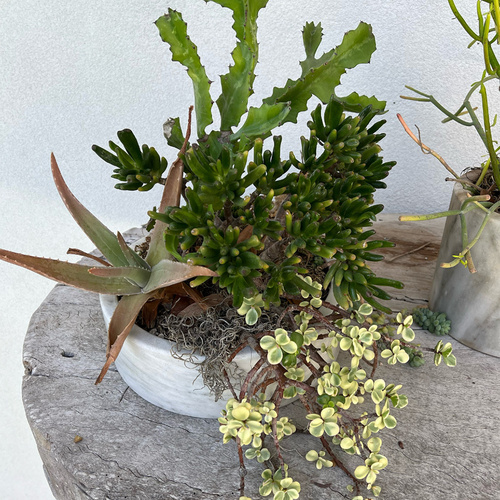
Hi GPODers!
Our week in Ponte Vedra Beach, Florida continues with stop #3 on their 2025 Secret Garden Tour. So far we’ve seen Teresa’s shady oasis that is the perfect retreat from the Florida heat (Teresa’s Serene Space) as well as Anne’s colorful garden that fuels a love of flowers and homemade food (Anne’s Abundant Kitchen Garden). Today we explore Allison’s courtyard garden with a potted collection of incredible desert plants that she designed with the help of her talented niece.
Allison Newberry Dennis’s Spanish style home reflects the time she spent in Cabo San Lucas, Baja, which was the inspiration for her courtyard garden of cacti and succulents. She and her niece, India Morrow (@Gardenistajax) designed a unique courtyard. Her distinctive cacti appear like a collection of fine sculptures.
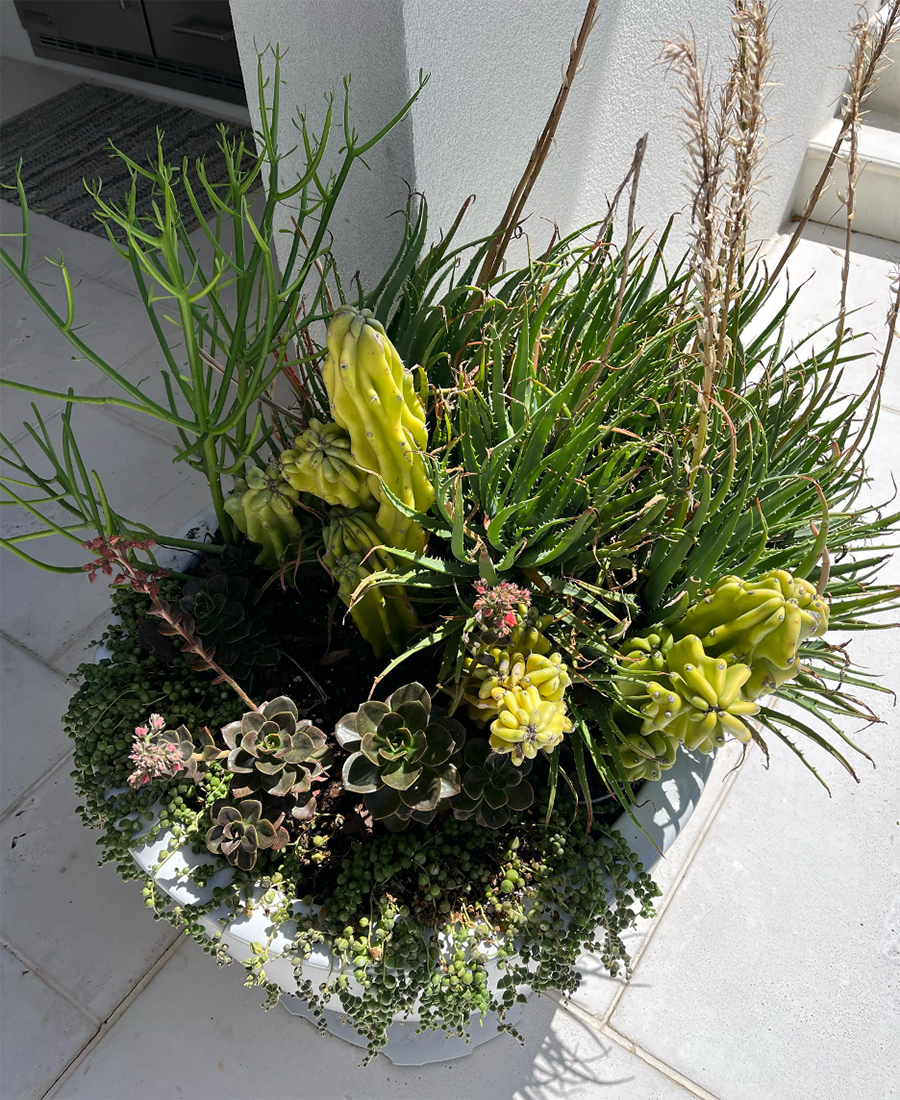 An incredible collection of cacti and succulents piled into one pot is a fantastic start to this display. A marvelous variety of colors and textures thrill, fill, and spill.
An incredible collection of cacti and succulents piled into one pot is a fantastic start to this display. A marvelous variety of colors and textures thrill, fill, and spill.
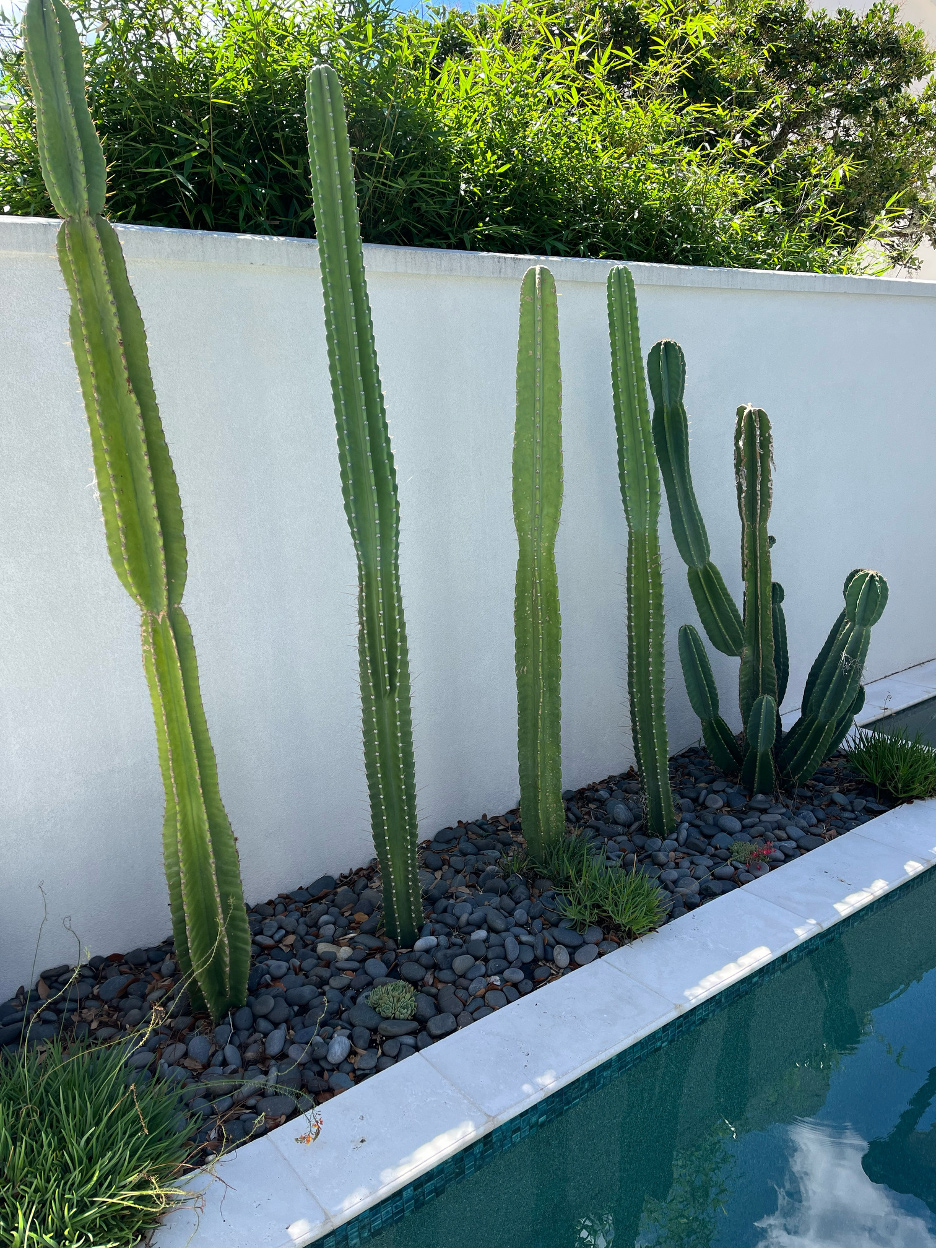 Allison has a great array of cacti and succulents that give a taste of the many ways these desert plants can be utilized. The curator of this tour submission, Anne Eshelman, mentioned the sculptural aspect of these plants, and I would like to add their architectural appeal as well. These Peruvian apple cacti (Cereus peruvianus, Zones 9–11) add a much-needed vertical element to this blank wall.
Allison has a great array of cacti and succulents that give a taste of the many ways these desert plants can be utilized. The curator of this tour submission, Anne Eshelman, mentioned the sculptural aspect of these plants, and I would like to add their architectural appeal as well. These Peruvian apple cacti (Cereus peruvianus, Zones 9–11) add a much-needed vertical element to this blank wall.
 But smaller cactus can make just as big an impact. The white ghost cactus (Euphorbia lactea ‘White Ghost’, Zones 9–11) in the back of this grouping is one of my favorites, and is a great contrast to the light green monstrose Peruvian apple cactus (Cereus peruvianus monstrose, Zones 9–11) and variegated baby sun rose (Mesembryanthemum cordifolium syn. Aptenea cordifolia ‘Variegata’, Zones 10–11) in front.
But smaller cactus can make just as big an impact. The white ghost cactus (Euphorbia lactea ‘White Ghost’, Zones 9–11) in the back of this grouping is one of my favorites, and is a great contrast to the light green monstrose Peruvian apple cactus (Cereus peruvianus monstrose, Zones 9–11) and variegated baby sun rose (Mesembryanthemum cordifolium syn. Aptenea cordifolia ‘Variegata’, Zones 10–11) in front.
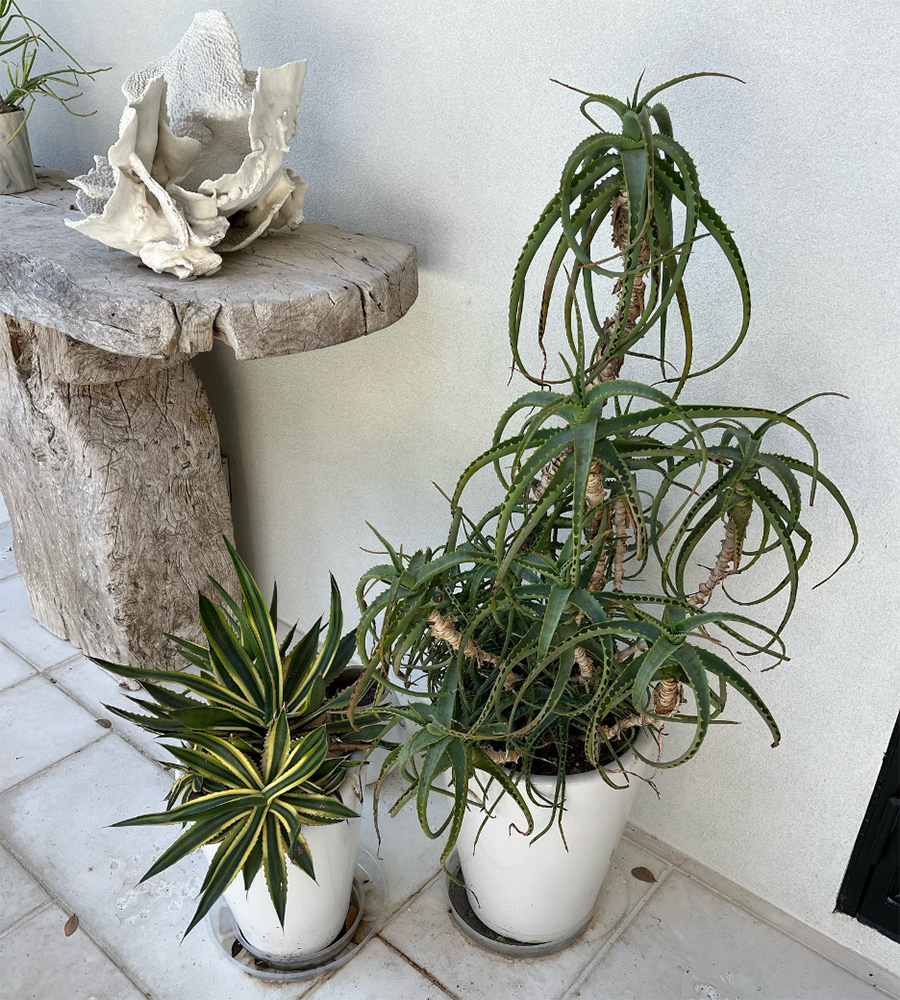 Allison and her niece have created some fantastic container combinations, but cacti and succulents are so interesting they can often create just as big of a statement by standing alone in a pot. A brightly variegated agave is a great contrast to the curling leaves of candelabra aloe (Aloe arborescens, Zones 9–11).
Allison and her niece have created some fantastic container combinations, but cacti and succulents are so interesting they can often create just as big of a statement by standing alone in a pot. A brightly variegated agave is a great contrast to the curling leaves of candelabra aloe (Aloe arborescens, Zones 9–11).
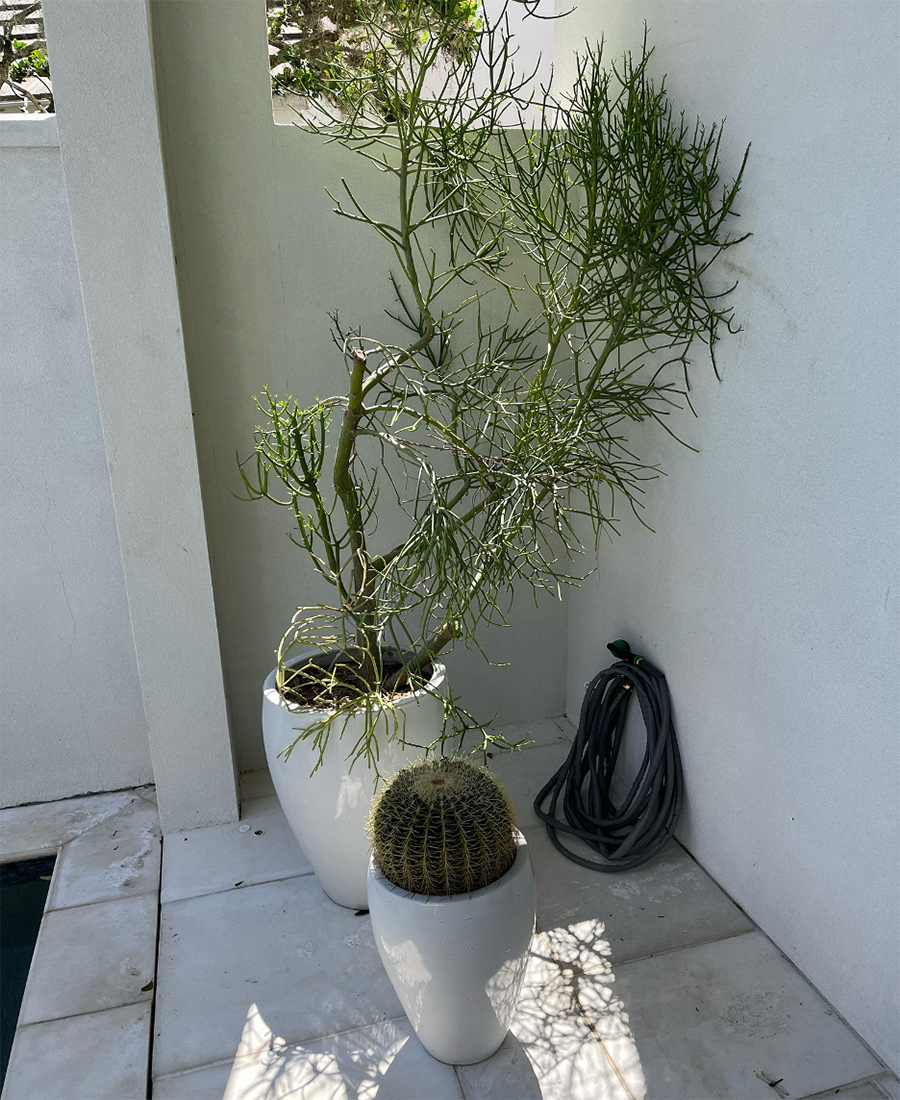 More one-plant pots that absolutely stun! The pencil cactus (Euphorbia tirucalli, Zones 11–12) in the back is massive, I would love to know how long Allison has had that plant and what size it started out as. A Golden Barrel Cactus (Echinocactus grusonii, Zones 9–11) is a small but mighty companion.
More one-plant pots that absolutely stun! The pencil cactus (Euphorbia tirucalli, Zones 11–12) in the back is massive, I would love to know how long Allison has had that plant and what size it started out as. A Golden Barrel Cactus (Echinocactus grusonii, Zones 9–11) is a small but mighty companion.
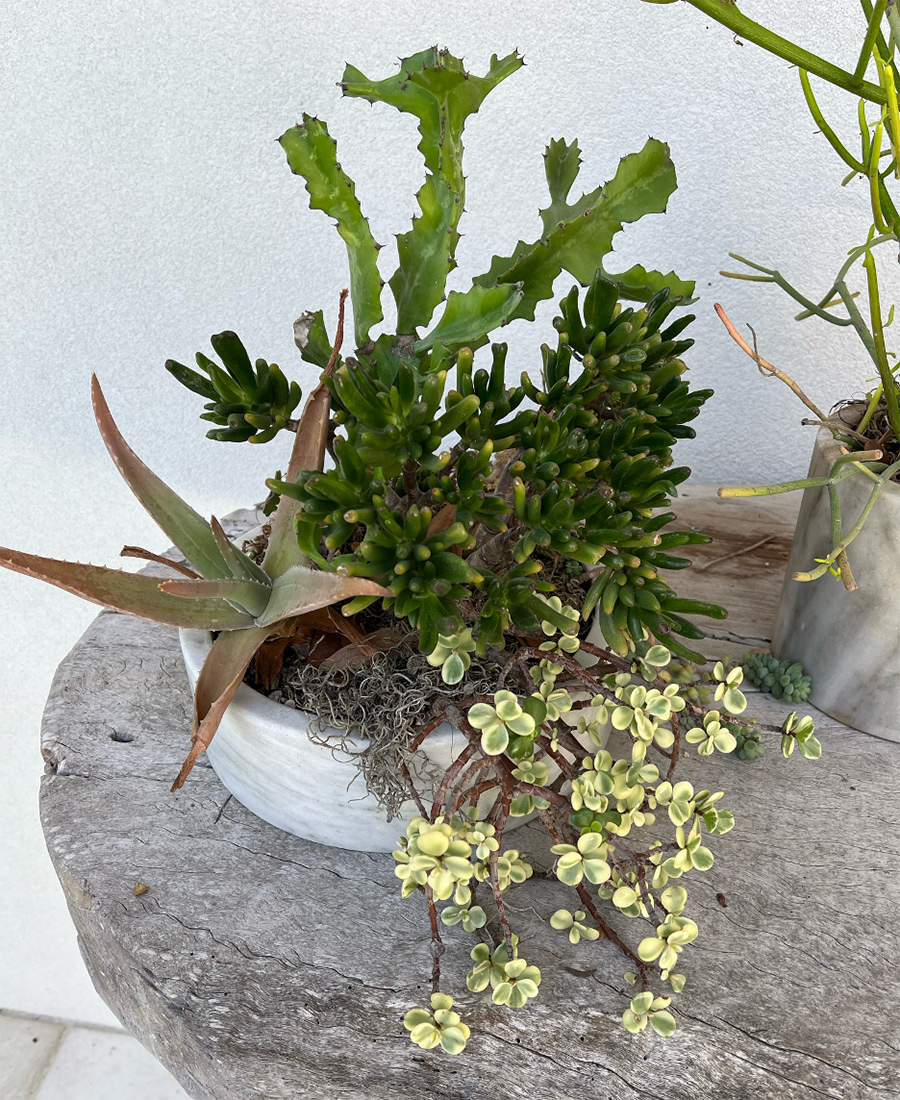 While Allison has some really impressive plants, the smaller pots are just an interesting. Variegated rainbow bush (Portulacaria afra f. variegata, Zones 10–12) is an exciting spiller and ‘Gollum’ jade (Crassula ovata ‘Gollum’, Zones 9–10)—not to be mistaken with its relative, the hobbit jade—is a fun twist on the classic jade plant.
While Allison has some really impressive plants, the smaller pots are just an interesting. Variegated rainbow bush (Portulacaria afra f. variegata, Zones 10–12) is an exciting spiller and ‘Gollum’ jade (Crassula ovata ‘Gollum’, Zones 9–10)—not to be mistaken with its relative, the hobbit jade—is a fun twist on the classic jade plant.
 The last tiny pot features a young and small pencil cactus (potentially a cutting of the much larger plant we saw above) and a very dark burgundy echeveria that is yet another example of the diversity (and collectability) of these sun-loving plants. This collectability, unfortunately, comes with some caution. If you haven’t yet, please check out our article on the prevalence of poaching in the plant trade, particularly amongst rare and collectable cacti and succulents: The Growing Problem of Botanical Theft. No concern for Allison, however, all of her plants look like well-loved, reliably-sourced specimens!
The last tiny pot features a young and small pencil cactus (potentially a cutting of the much larger plant we saw above) and a very dark burgundy echeveria that is yet another example of the diversity (and collectability) of these sun-loving plants. This collectability, unfortunately, comes with some caution. If you haven’t yet, please check out our article on the prevalence of poaching in the plant trade, particularly amongst rare and collectable cacti and succulents: The Growing Problem of Botanical Theft. No concern for Allison, however, all of her plants look like well-loved, reliably-sourced specimens!
Keep an eye on your inbox this week for two more stops on this incredible garden tour. And if you’re feeling inspired to share you garden with a larger community, we would love to feature your plant photos on Garden Photo of the Day! Follow the directions below to submit photos via email, or send me a DM on Instagram: @agirlherdogandtheroad.
We want to see YOUR garden!
Have photos to share? We’d love to see your garden, a particular collection of plants you love, or a wonderful garden you had the chance to visit!
To submit, send 5–10 photos to [email protected] along with some information about the plants in the pictures and where you took the photos. We’d love to hear where you are located, how long you’ve been gardening, successes you are proud of, failures you learned from, hopes for the future, favorite plants, or funny stories from your garden.
Have a mobile phone? Tag your photos on Facebook, Instagram, or Twitter with #FineGardening!
Do you receive the GPOD by email yet? Sign up here
Fine Gardening Recommended Products
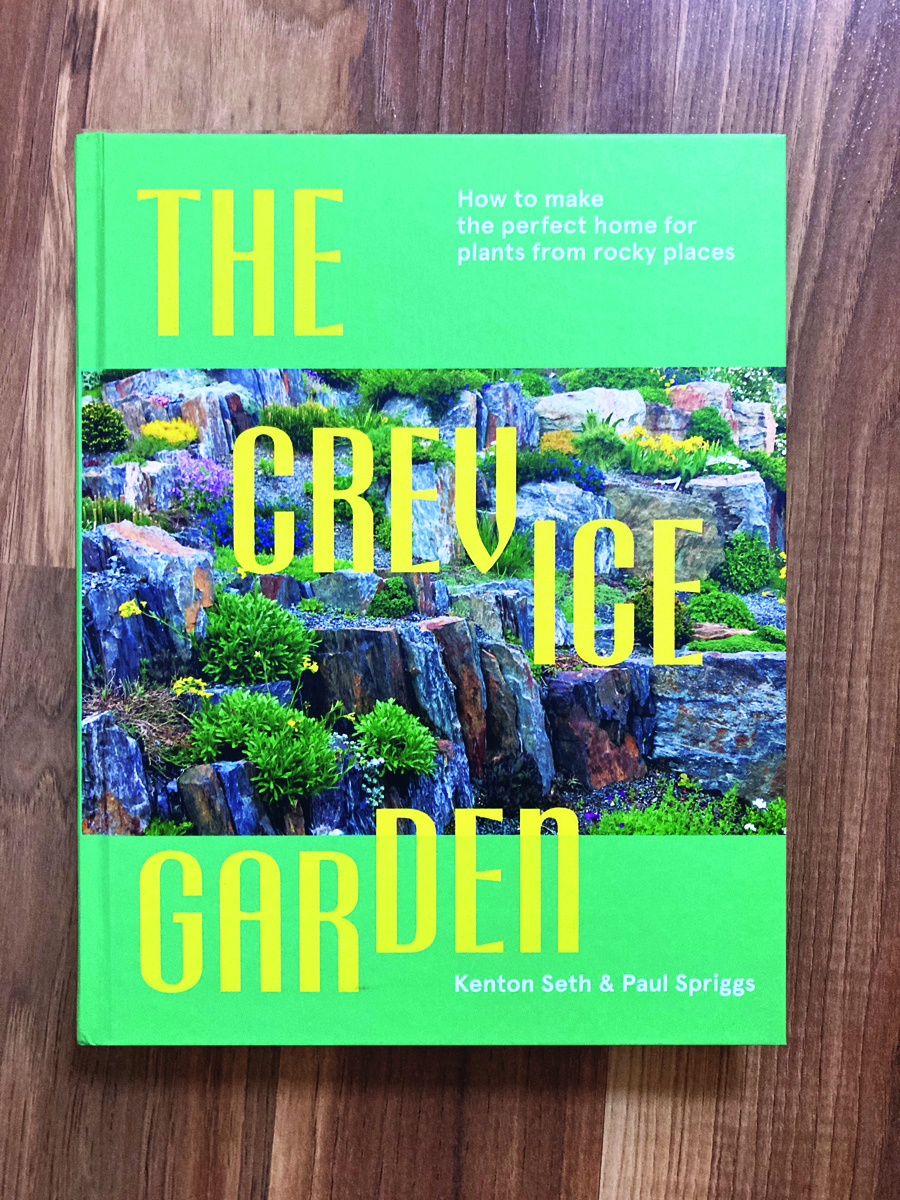
The Crevice Garden: How to make the perfect home for plants from rocky places
Fine Gardening receives a commission for items purchased through links on this site, including Amazon Associates and other affiliate advertising programs.
A crevice garden replicates the environmental conditions of mountain tops, deserts, coastlines, and other exposed or rocky places on earth. These striking garden features provide perfect conditions for the plants native to these far-off places, bringing the cultivation of these precious gems within everybody’s reach.
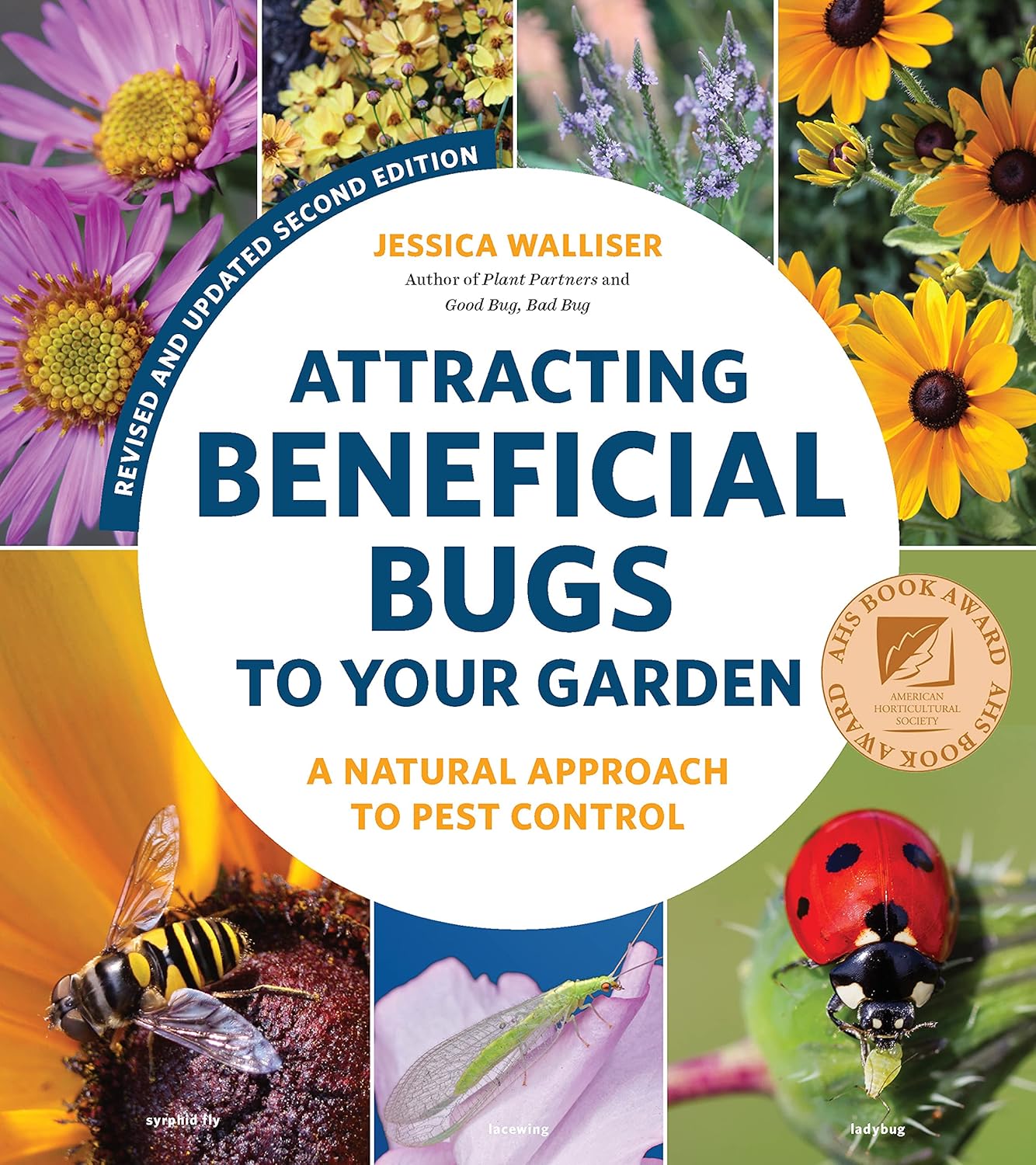
Attracting Beneficial Bugs to Your Garden, Revised and Updated Second Edition: A Natural Approach to Pest Control
Fine Gardening receives a commission for items purchased through links on this site, including Amazon Associates and other affiliate advertising programs.
This revised and updated edition of Jessica Walliser’s award-winning Attracting Beneficial Bugs to Your Garden offers a valuable and science-backed plan for bringing balance back to the garden. With this indispensable gardening reference—now updated with new research, insights, and voices—learn how to create a healthy, balanced, and diverse garden capable of supporting a hard-working crew of beneficial pest-eating insects and eliminate the need for synthetic chemical pesticides.
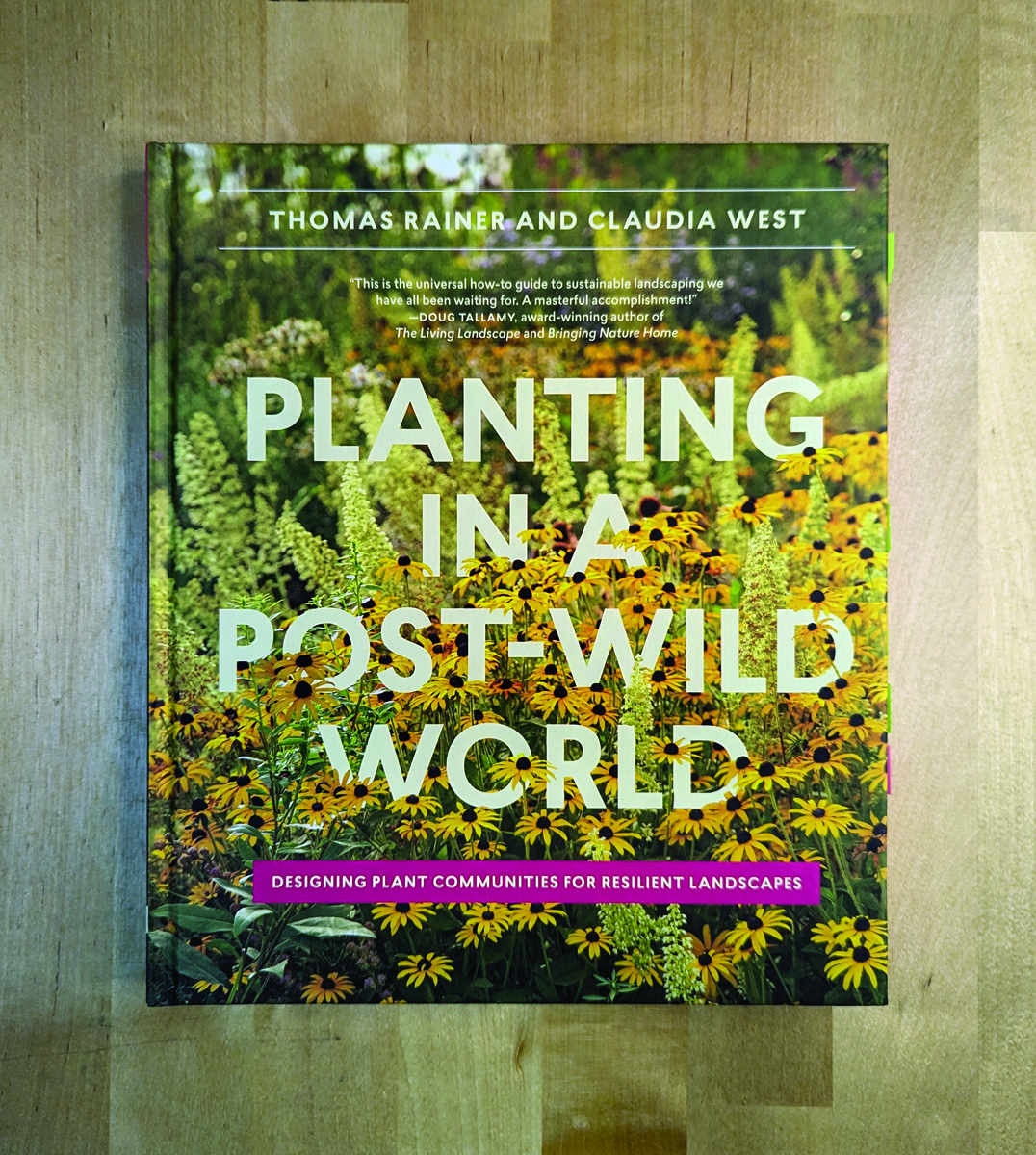
Planting in a Post-Wild World: Designing Plant Communities for Resilient Landscapes
Fine Gardening receives a commission for items purchased through links on this site, including Amazon Associates and other affiliate advertising programs.
Featuring gorgeous photography and advice for landscapers, Planting in a Post-Wild World by Thomas Rainer and Claudia West is dedicated to the idea of a new nature—a hybrid of both the wild and the cultivated—that can nourish in our cities and suburbs.








